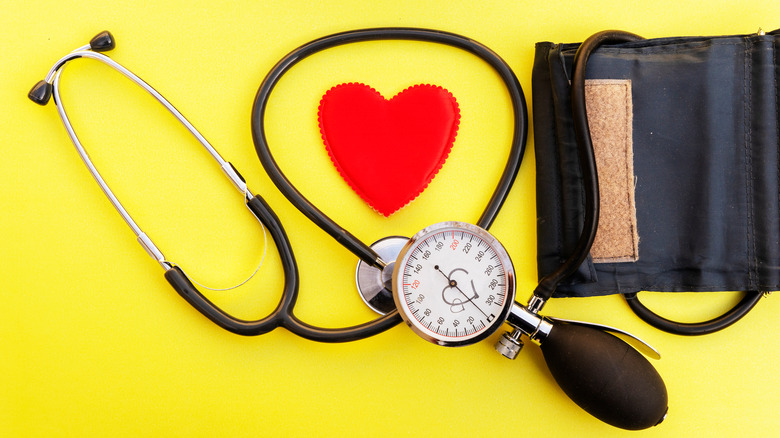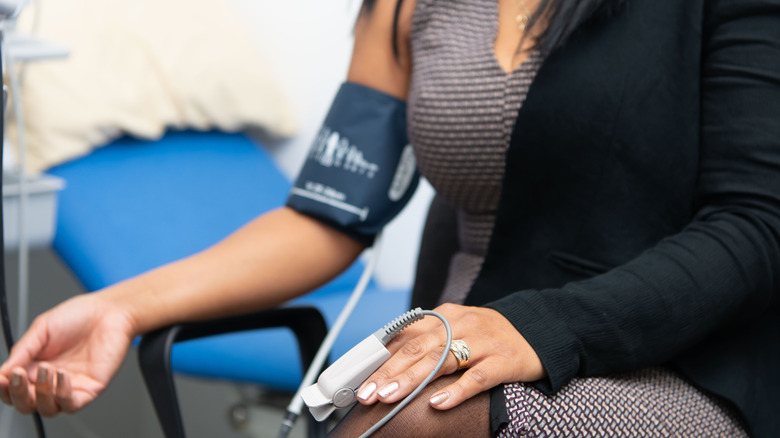How To Properly Use A Blood Pressure Cuff
The heart is our life source. Are you curious to know how hard it's working? Vitals are not just reserved for health experts. You can learn to take them too. Let's unpack why blood pressure (BP) monitoring is paramount and how to do it from home.
A blood pressure reading consists of two numbers: systolic and diastolic (via Mayo Clinic). When your heart beats, the systolic pressure tells you how hard your heart is working to circulate blood throughout your arteries. The diastolic reading measures artery pressure between each beat (per American Heart Association). Arteries are blood vessels that circulate blood through the body (WebMD). Hypertension makes arteries less flexible, which stifles blood flow and oxygenation to organs and muscles. Having high blood pressure increases the risk of heart disease, strokes, and kidney troubles (Centers for Disease Control and Prevention (CDC)).
Blood pressure monitors give us a picture of what's happening internally. If you think you have high blood pressure, consider checking your BP at home before seeing a doctor. You can use machines that monitor blood pressure manually or automatically. Automatic monitors may be easier for the elderly or people with vision and hearing trouble (Forbes). Taking blood pressure manually may offer a more accurate reading.
The values that are considered normal or high may vary. The general rule is 120/80 is the normal value (per CDC). Prehypertension values fall anywhere between 120 and 139 mmHg systolic and 80 to 89 mmHg diastolic. High blood pressure levels will be above 130 and 140 mmHg systolic and well above 90 mmHg diastolic.
Simple guidelines for at-home use
Per Forbes, there are two types of automatic monitors: those with wrist cuffs or arm cuffs. Their size and grip are a bit different, but the overall method is the same.
When using an auto BP monitor, Forbes says be sure your cuff is snug. If it is oversized or too small, this could give an inaccurate value. For a stable heart rate, try to avoid smoking or drinking caffeine 30 minutes prior to taking the test. Begin by relaxing with your arm elevated at heart level. Roll up the sleeve where you'll be taking your vitals (Omron Healthcare). Press start and wait for the monitor to display your blood pressure.
Anaeroid (manual) monitors require a cuff, pump, and gauge with a good stethoscope, according to Mayo Clinic. To use it, sit comfortably and wrap the cuff tightly around your bare arm, above the elbow. Squeeze the pump until the cuff is fully inflated. Place the stethoscope face down underneath the inflated cuff. Turn the pump knob clockwise to deflate the cuff slowly. The value the gauge falls on when you first hear your heartbeat is your systolic blood pressure. The gauge reading when you no longer hear your heartbeat is your diastolic blood pressure.
Taking your blood pressure with an auto BP monitor can be done at the press of a button. While manually taking blood pressure requires more equipment, the results are just as good. Regularly monitoring your blood pressure can help you learn how to manage it. If your blood pressure reads over 140/90, seek medical attention immediately. This can be a sign of a medical emergency.


